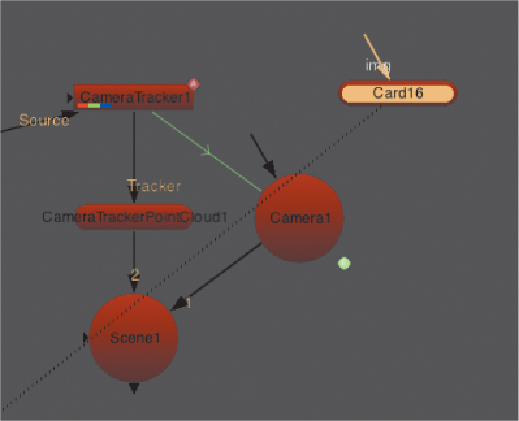Graphics Programs Reference
In-Depth Information
You now have practically all the elements you need: A camera, a reflective sur-
face, and something for it to reflect. Time to connect it all up. There are only two
missing pieces to the jigsaw puzzle, discussed in the next section.
Environment light and specular material
Nuke's ScanlineRender node isn't a raytracing renderer and so it can't generate reflec-
tions.
Raytracing
means that light can bounce not only from its source onto a surface and
to the camera, but also from its source onto a surface, then onto another surface, and onto
the camera. So even though you have a surface and a reflection map, you can't tell the
surface to mirror the reflection map. What Nuke does have is a light source called En-
vironment, which shines light, colored by an input image instead of a single color, onto
surfaces.Thesesurfacesneedstrongspecularmaterialcharacteristics.
Specular
meansob-
jects (or parts of objects) that reflect a light source directly to the camera. A specular ma-
terial, also called
shader
, can also be generated inside Nuke.
Let's connect the whole thing up. First you'll need to create the Environment light and
connect the panorama to it, then connect everything up with a Scene node and finally an-
other ScanlineRender node.
1. Select ScanlineRender1 and from the 3D/Lights toolbox insert an Environment
node.

Search WWH ::

Custom Search